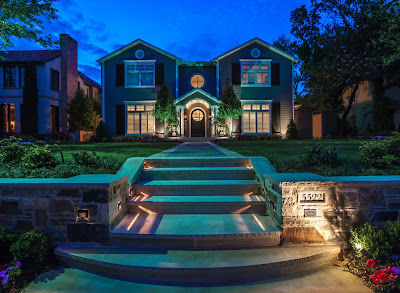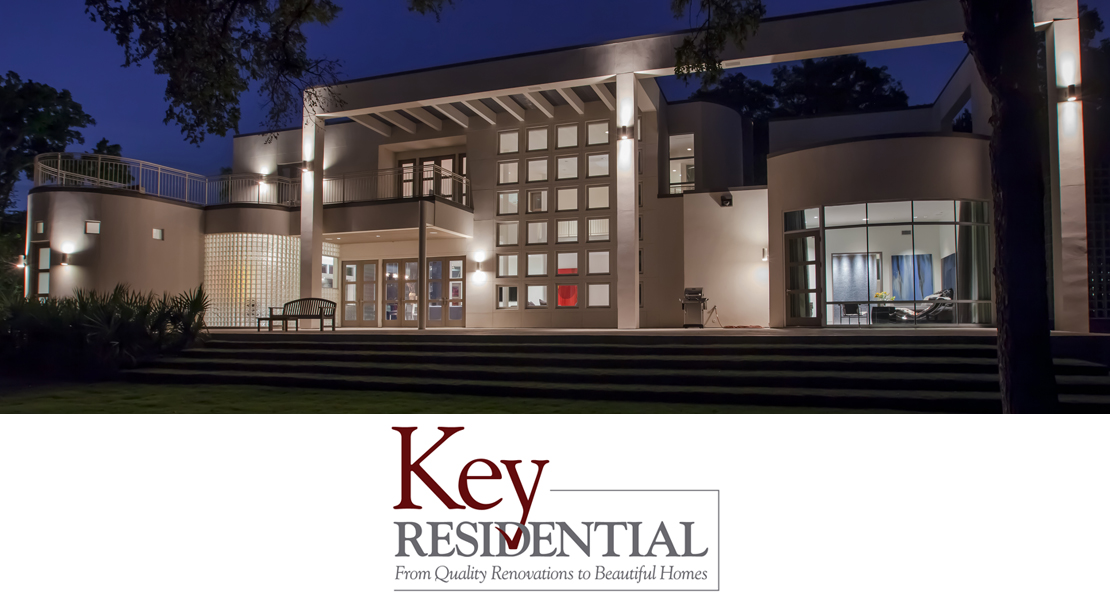What impression will people have when they first see your home? Is your house memorable to someone just passing by, or is it just another house on the street? Your home's curb appeal is the first real impression that someone will have of your home and often times it can be a long lasting impression. Check out these ideas on how to maximize your home's curb appeal and leave a good first impression for guests or those merely passing by.
| The tall and narrow trees help to highlight this homes Tudor architecture and high arching roof line. |
SHOW OFF YOUR HOUSE
Ensure that the exterior of your home is in good condition. A fresh coat of paint can work wonders in freshening up your home's exterior. If anything is broken or falling apart then replace it as quickly as possible. Once your home exterior is in top condition you can focus on showing it off. Other features contributing to your curb appeal should work to compliment but not overshadow your house. And if you house has any interesting architectural features then you should make sure that they are prominently highlighted in your home's front facade.
LANDSCAPING
Grass is a good starting point when planning the landscaping of your front yard. Pick a type of grass that will do well in your climate zone to reduce the amount of care required. Synthetic grass is a good alternative if you want something that will stay green all year round with little care. If you live in an area that often suffers from drought and don't want to care for a full yard of grass then you could opt for more varied plant life. A mixture of flowers, trees, and bushes can add a unique look to your front yard. |
| A wide path to the front door and retaining walls compliment the softer landscaping touches of this front yard. |
HARDSCAPING
When it comes to hardscaping, you will at the very least want a pathway leading to the front door so that guests have a clear area to walk. Beyond that you have virtual free reign of what hardscaping to include. If you've chosen some interesting landscaping features then you may want to include extra paths so that people have a safe place to walk to enjoy the view. Small barriers or short fences are useful to separate grass areas from other plant life. Of if plants aren't your thing you could devote some space to a rock garden.
 |
| This solid glass front door allows the front entry of the home to become a part of the curb appeal. |
FRONT DOOR
As the barrier between your home and the outside world, don't be afraid to add some interest to your front door or entry area to really make it stand out. If your home is built with relatively neutral colors then a bold hue for your front door can add a unique statement. A solid wood door can make a statement if you're hesitant about using non-neutral colors. If if you're feeling adventurous then consider a full glass door that will allow you to also draw in the visible part of your entry into your curb appeal.
DECORATIONS
You add decorative accessories inside your home, such as artwork and photos, so why not add a few outside to the front of your house as well? A stylish birdbath can help attract more nature and surround your yard with the pleasant sound of running water. If you're in the patriotic mood then add a US flag by your front door. Or fly the flag of your favorite sports team. A unique and relatively easy way to add some decoration would be in your house numbers. Opt for something other than the standard fare to set your house apart.
 |
| A US flag and dual rocking chairs help to create a home-y facade for this home. |
 |
| The appearance of this home differs greatly during the day and at night, but regardless of the time of day it still looks great. |
LIGHTING
Lighting is easily overlooked after adding a light at the front door and any other entries into the home (which should be the first priority when lighting the exterior of your home), but the right lighting can make a large impact on your home's appearance. Homes can look completely different at night than they do during the day. The lack of natural lighting allows you to add accent lights to highlight certain features that may not stand out quite as much in the daytime. The combination of light and shadows allows you to create a unique front facade.



















